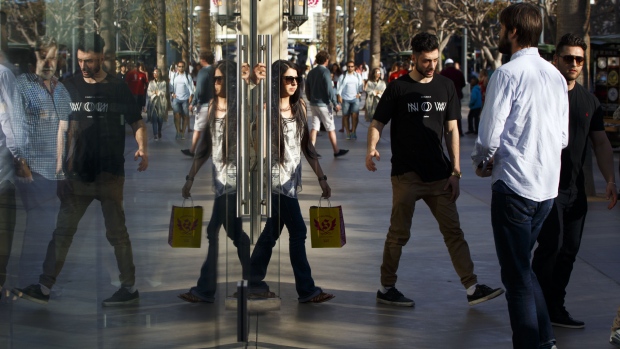Nov 29, 2018
U.S. consumer spending picks up while inflation below forecast
, Bloomberg News

Americans' spending rose by more than forecast in October, giving the biggest part of the economy a solid start to the quarter, while a measure of underlying inflation cooled to the slowest since February.
Purchases rose 0.6 per cent after a downwardly revised 0.2 per cent advance, Commerce Department data showed Thursday. The median forecast in a Bloomberg survey called for a 0.4 per cent gain. Incomes increased 0.5 per cent, more than projected and the most since January, partly reflecting government subsidy payments to farmers.
Excluding food and energy, the Fed’s preferred price measure rose 1.8 per cent from a year earlier, missing forecasts for 1.9 per cent. The central bank targets 2 per cent inflation including all items, though it looks to the core gauge as a better indicator of underlying price trends.
Americans’ spending is poised to keep driving growth this quarter, supported by a strong job market, lower taxes and improving finances that’ll likely also boost holiday spending. Even with the weaker inflation readings, the Fed is widely anticipated to move ahead with an interest-rate hike in December, though the pace of moves beyond that is less certain.
There were several caveats in Thursday's figures: The saving rate fell to 6.2 per cent, the lowest this year and matching the lowest since 2013. Incomes were boosted by an US$11.6 billion increase for farmers, which includes the subsidy payments. And the biggest contributor to the increase in services spending was household electricity and gas, which tends to reflect weather swings.
A separate Labor Department report on Thursday showed filings for U.S. unemployment benefits rose for a third week to the highest level since May, potentially reflecting volatility around two consecutive periods that included holidays.
Fed Outlook
The inflation figures could also add to speculation that the Fed will move more slowly than it expects on interest-rate hikes in 2019.
So-called core prices, which exclude food and energy, increased 0.1 per cent from the prior month, less than the median estimate of a 0.2 per cent rise. The main gauge rose 0.2 per cent from the previous month, in line with projections, though it was up 2 per cent from a year earlier, compared with forecasts for 2.1 per cent.
The report follows comments Wednesday by Fed Chairman Jerome Powell seen by investors as supporting the idea that policy makers are increasingly open to pausing their series of hikes next year, though he said he expects inflation to remain near 2 per cent.
Consumer spending, which accounts for about 70 per cent of the economy, had been projected to moderate this quarter after rising in the prior three months at a 3.6 per cent annualized pace that was revised down from 4 per cent. The economy also is forecast to cool, after the best back-to-back quarters of growth since 2014.
Wages and salaries rose 0.3 per cent in October for a second month, adding to steady gains this year, Thursday's data showed. Real disposable income, or earnings adjusted for taxes and inflation, was up 0.3 per cent after a 0.1 per cent increase.
Even so, while hiring remains strong and the unemployment rate is the lowest since 1969, workers' paychecks have yet to show a sustained, robust acceleration.
Get More
- Durable goods spending, adjusted for inflation, rose 0.4 per cent after a 0.3 per cent increase in the prior month; nondurable goods climbed 0.3 per cent after a 0.1 per cent increase.
- Household outlays on services, adjusted for inflation, rose 0.5 per cent after a 0.1 per cent gain in the prior month.

